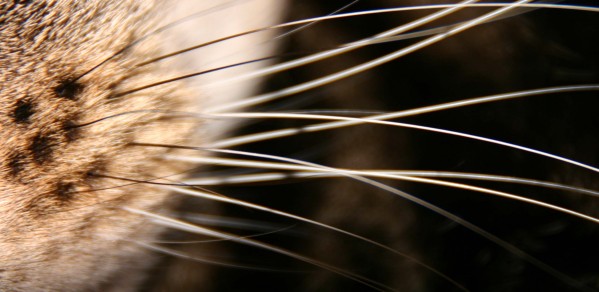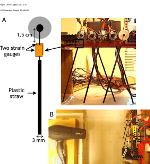
In this article from The Conversation, Dr Michelle Oyen, Reader in Bioengineering for the Department of Engineering, examines how researchers are designing bio-inspired artificial whiskers – and what this means for the advancement of medicine.
The true promise goes beyond what it might be imagined Lego, straws and hair-dryers could provide.
Dr Michelle Oyen
The image of a cat’s quivering whiskers has always been suggestive of an animal with a sixth sense. Now scientists are experimenting with robo-whiskers, synthetic versions of the super-sensitive fibres, which may one day allow surgeons to perform extremely delicate procedures via keyhole surgery.
Biomimetics – the imitation of living systems – is a branch of engineering that copies from or is inspired by nature. For example, tissue engineering uses scaffolds often designed to directly imitate the structure and properties of native tissues. When used in bone repair, these can be made from collagen or calcium phosphate, both found naturally in bones. While it makes sense to mimic nature for an implant that is going into the body, there are applications for external uses too, such as this bio-inspired whisker array.
Probing sensitive subjects
Animals with whiskers (technical term vibrissae) include various rodents, cats and sea mammals such as seals, which use whiskers to probe and sense the environment around them. Whiskers are larger than typical mammalian hairs, but similar in structure and composition. They do not contain nerves – but where the whiskers meet the skin is an extraordinarily sensitive mechanism that allows the animal to feel with the whiskers. At their base, the nerve endings can sense direct stimuli when they are bent through contact, and indirect stimuli, when the hairs deform or shift in response to air or fluid currents moving around them.
The study by researchers in Singapore and the US takes a discount store approach by using common objects such as plastic drinking straws and Lego blocks to create a bio-inspired array of five artificial whiskers.
The straws act as the whiskers, responding to air currents generated by a hair dryer. Strain sensors at the base of the plastic whiskers monitor their movement and shape change in response to the currents. This simple experimental set-up is linked to complex mathematical analysis capable of demonstrating whether the artificial whiskers faithfully capture various different airflow patterns from the hair dryer.
Making whiskers active
As is often the case in bio-inspired engineering, the true promise goes beyond what it might be imagined Lego, straws and hair-dryers could provide.
By bringing together complex fluid mechanics, control theory and electronic signal processing, experiments with artificial whiskers could provide significant engineering advances. Bioengineering is an interdisciplinary research area – and experiments like this can bring together experts from different fields of inquiry that would normally operate independently. Although the authors deal only with passive whisker sensing, there’s significantly more promise to an approach that uses robotics to create robo-whiskers, capable of responding to stimuli and passing information. These whiskers would be “biofidelic” – able to mimic the natural system more closely.
Even in a relatively simple form, the potential applications for synthetic whiskers arrays are far more interesting as they could demonstrate invaluable medical uses, such as in surgery. With traditional open surgery, surgeons use the tactile feedback provided by the extremely sensitive nerve endings in their own fingertips to guide their tools. The tactile feedback helps the surgeon, but infection and other risks are a problem.
The other approach is minimally invasive, keyhole surgery, when the surgeon’s hands do not enter the site of the operation. Instead the surgical tools are mounted on fibre-optic scopes or other sorts of remote instruments that are inserted into a far smaller hole. As doctors adopt this approach, the need to provide new ways of gaining a clearer sense of feeling, as when physically holding the instruments, has become more pressing.
If the thought of cat (or rat, or even seal) whiskers inside your aorta makes you shudder, consider that it’s entirely possible that your own future cardiac outpatient procedure some years from now may be quicker and more successful because of robotic tactile feedback mechanisms inspired by this whiskery experiment.


